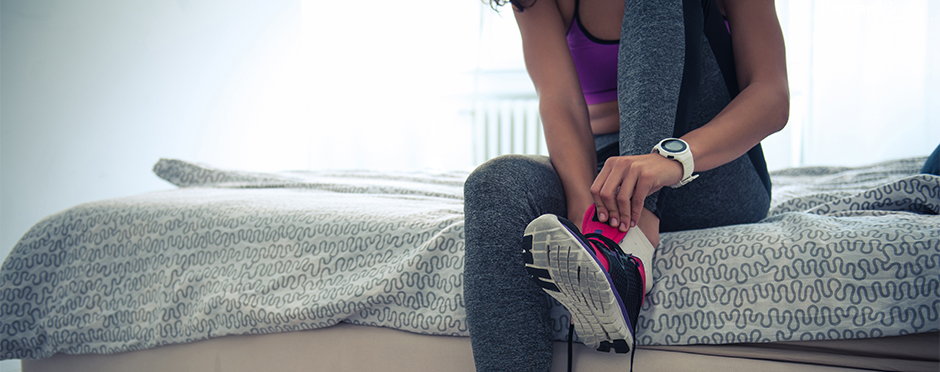
Starting a training plan STRONG
Leave a CommentAs we plunge into the cold winter months, most runners are already filling their schedules with the year’s race plan. They’re surfing for coupon codes, researching training plans and shopping the sales for new gear. After the ball drops on the New Year, many are itching to start their training regime. However, often what is missing in this plan is a strengthening component.
Runners new and old all know one undeniable truth that comes with running; injuries happen. No matter how many precautions a runner takes there may be a time when the injury bug bites and for some it’s more often than others. Based on a Systematic Review from 2007, the most common site of lower extremity running injuries was the knee 1. Additionally, an article published in the Journal of Orthopaedic and Sports Physical Therapy indicated that young women with knee pain are more likely to demonstrate hip weakness than age-matched women who are not symptomatic 2.
There is a plethora of research that supports the inclusion of a strengthening component in a runner’s training plan. For most runners, myself included in the past, it is quite easy to become consumed with logging a certain amount of miles. Meanwhile, strengthening, as well as stretching, becomes a mere afterthought. The best training plans, however, are those that interweave all three of these vital components.
Now in many regards, strengthening programs should be tailored to the individual runner themselves. However, there are key muscle groups that all runners need to target and I listed some of these common exercises in the below pictures. Ultimately, for the best possible outcome, I would highly recommend reaching out to your local Athletico Physical Therapist for a free injury assessment before the start of the season. Just like you wouldn’t take your car across the country without getting a tune up first, don’t head into the 2019 race season without a complete plan for taking care of your body. A strong start will go a long way to help you finish STRONGER.
Posterior Pelvic Tilt

- Begin by lying on your back with your knees bent and feet resting on the floor.
- Slowly tilt your pelvis upward so that your low back feels like it is pushing into the floor, then return to the starting position and repeat.
- Make sure to only move your pelvis and low back and keep the rest of your body relaxed.
Sidelying Clamshells


- Begin by lying on your side with your knees bent 90 degrees, hips and shoulders stacked, and a resistance loop secured around your legs.
- Raise your top knee away from the bottom one, then slowly return to the starting position.
- Make sure not to roll your hips forward or backward during the exercise.
Hamstring curls:


- Begin lying on your back with your feet resting on an exercise ball.
- Tighten your stomach muscles, then lift your hips up into a bridge position. Maintaining your bridge, bend your knees, curling your heels toward your bottom. Reverse the movement slowly, and repeat.
- Make sure to maintain your balance and keep your stomach muscles engaged during the exercise.
Sidestepping


- Begin standing upright with a resistance band looped around your thighs and another looped around your ankles. Bend your knees slightly so you are in a mini squat position
- Slowly step sideways, maintaining tension in the bands.
- Make sure to keep your feet pointing straight forward. Do not drag your feet on the ground or let your knees collapse inward during the exercise.
Monster Walks

- Begin in a standing upright position with a resistance band looped around your ankles.
- Slightly bend your knees into a mini squat position. Step diagonally backward with one foot, then slowly bring your feet together. Repeat in the opposite direction
- Make sure to keep your chest upright and do not bend your knees forward past your toes.
If you would like to learn more from an Athletico physical therapist, please use the button below to request an appointment!
The Athletico blog is an educational resource written by Athletico employees. Athletico bloggers are licensed professionals who abide by the code of ethics outlined by their respective professional associations. The content published in blog posts represents the opinion of the individual author based on their expertise and experience. The content provided in this blog is for informational purposes only, does not constitute medical advice and should not be relied on for making personal health decisions.
References:
1. https://bjsm.bmj.com/content/41/8/469).
2. https://www.jospt.org/doi/abs/10.2519/jospt.2003.33.11.671.
